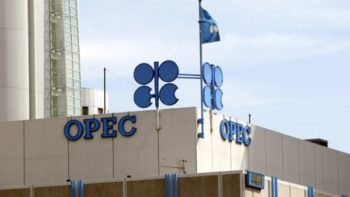
The ongoing fall in oil prices has driven risk-off sentiments across all asset classes. US stocks closed mostly lower on Wednesday despite the unexpected rise in home resales.
The U.S. Treasury yield curve flattened further to almost a decade-low ignoring the Fed policymakers’ hawkish statements. Meanwhile, commodity currencies felt most of the pain with the Lonnie and Aussie falling against the U.S. dollar.
It’s evident that oil prices are becoming the primary driver of the financial markets. After both benchmarks entered a bear market with Brent plunging below $45 for the first time since November, investors are becoming more concerned as to when the plunge will stop.
Back in November 2016, when OPEC and non-OPEC producers, including Russia, decided to cut production, most market participants believed that this would lead to a re-balancing of the market and the supply glut would come to an end. Eight months later, U.S. shale producers increased the rate of drilling, Libya is pumping oil at the highest levels in four years, and the amount of oil that’s being stored in tankers jumped to a new high in 2017.
The key question most traders are asking is when oil will finally find support? At this stage, it’s hard to say where prices will bottom out. Comments from Iranian oil minister, Bijan Zangeneh that Iran is in discussions with OPEC members for further production cuts fell on deaf ears, meaning that comments from OPEC members are unlikely to influence prices. With no hard data to encourage bulls to jump in, the risk to the downside will continue to persist. However, I believe at low $40 or below, U.S. shale producers will start to suffer and drilling activities will most likely take a U-turn, meaning that U.S. and global inventories will start declining at a faster pace.
Supply is not the only justification for lower prices. When looking at the other side of the equation we see that China’s demand is slowing, and it’s expected that 10% of the country’s refining capacity will shut down during Q3, which is another factor to worry about in the next couple of months.
I’m still confident that prices will return to the $50 – $60 range on the longer run, but with no action from OPEC to deepen production cuts, it will take longer for markets to rebalance, and central banks, especially the Fed should reconsider the risks of disinflation.
Copyright Ships & Ports Ltd. Permission to use quotations from this article is granted subject to appropriate credit given to www.shipsandports.com.ng as the source.